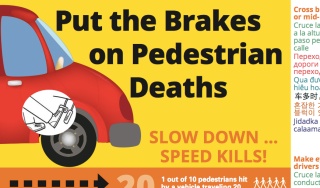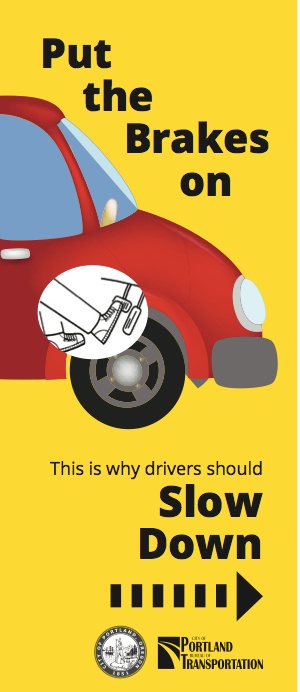
It’s a sad fact that too many people are killed while walking on Portland streets. Despite having some of the safest roads in the country, we still lose too many of our fellow citizens this way. Recently, these troubling tragedies have caused advocates to sound the alarm and local electeds to use “improving pedestrian safety” as a rallying cry in their effort to raise new local transportation revenue.
Another way our city has reacted is with a new marketing campaign aimed at addressing some of the root causes of these collisions: speed and road user behavior. The other day I cam across a new promotional ad created by PBOT with the goal of getting people to slow down and be more aware when using the streets.
The main title of the piece is “Put the brakes on: This is why drivers should slow down.” The ad also shares the infamous “speed kills” graphic that lays out how an even 10 mph difference can mean life or death. The bulk of the piece focused on tips for walkers — with a list of seven tips translated into eight different languages.
Sharon White, a traffic safety specialist at PBOT who works on the High Crash Corridor program (among other things), said the “Put the brakes on Pedestrian Deaths” ad campaign is being inserted into high school newspapers. Specifically, PBOT has placed the graphic in two schools located close to SE Powell Blvd, one of the most dangerous streets in Portland: the Franklin High School Post and the Cleveland High School Clarion.
The ad is also being placed in the SW Portland Post (which is distributed to homes and businesses near SW Barbur Blvd and SW Beaverton-Hillsdale Highway, two of PBOT’s High Crash Corridors), the East Portland News, and the SW News.
Here are a few details from the poster and brochure:
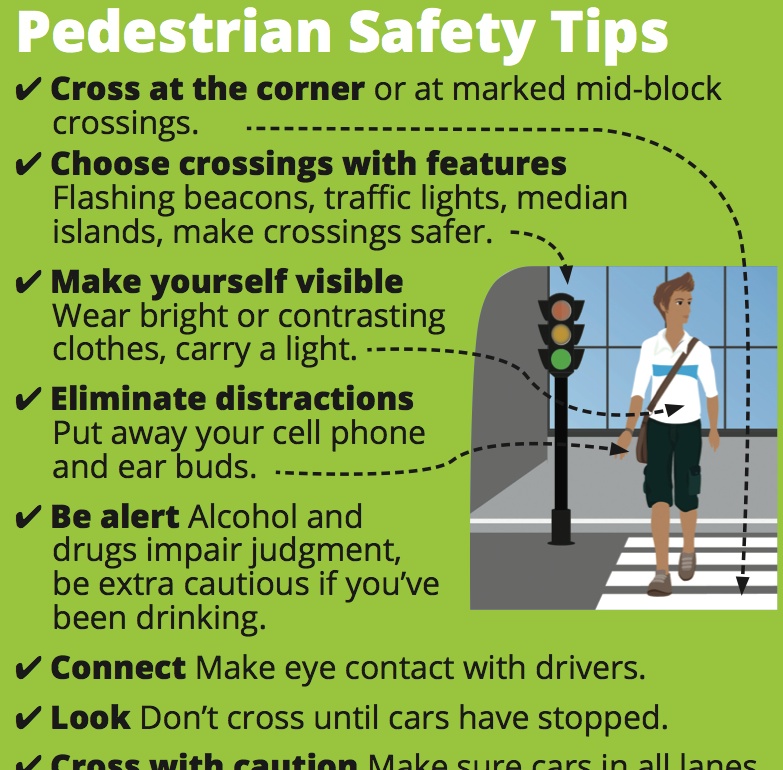
Advertisement
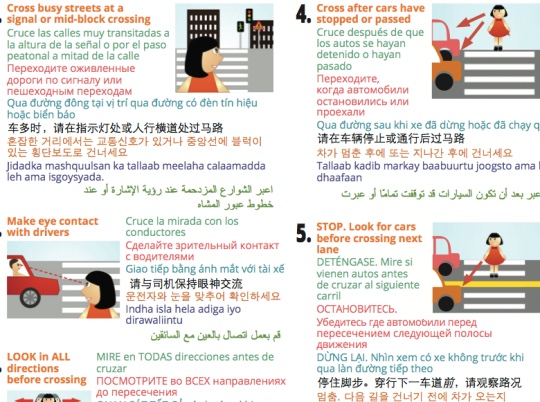
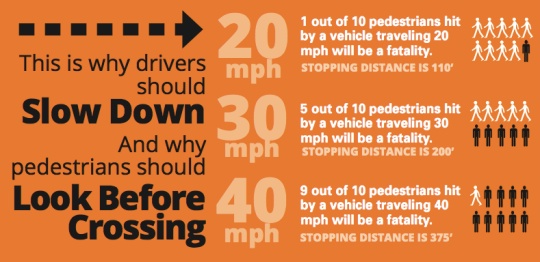
Funding for this campaign came from the Oregon Department of Transportation and NHTSA’s Federal Safe Community Grant program.
Another element of this campaign is an online “Pedestrian Safety Quiz” available at LookBeforeCrossing.org. PBOT is offering a free reflective tote bag for Portlanders who complete the quiz.
Most of the talk around walking safety revolves around infrastructure — building new sidewalks and crossing treatments — so it’s great that PBOT hasn’t forgotten the marketing side of the equation. And while I’d personally like to see more emphasis on how to drive safely (since that’s very often the cause of these collisions) it’s good to see PBOT embrace campaigns like this.
To learn more about PBOT’s traffic safety work and programs, see their website.
